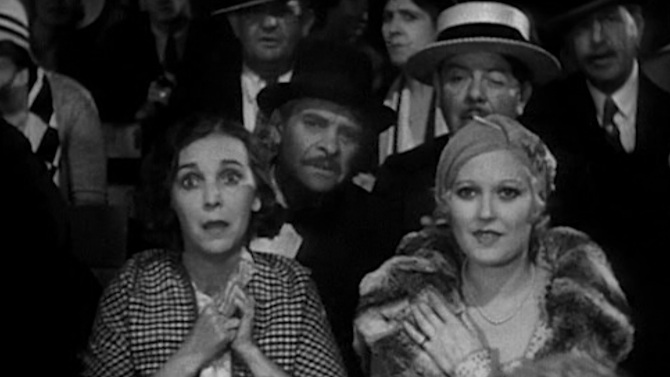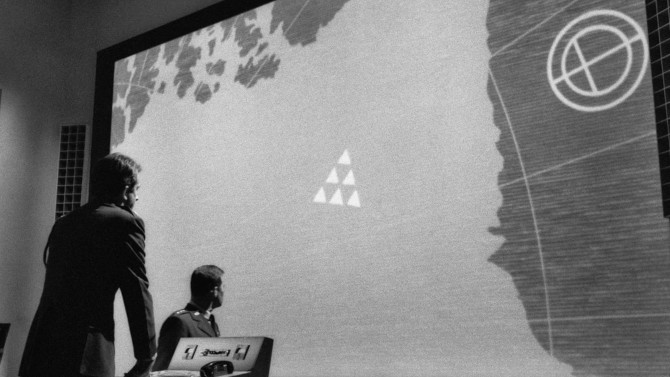
Safety First
Like a severe and utterly serious version of Stanley Kubrick’s 1964 satirical dark comedy Dr. Strangelove or: How I Learned to Stop Worrying and Love the Bomb, you would think that Fail Safe would have been the original release in theatres that was then later spoofed, yet that is not the case. Released approximately six months later in the same year, as you might imagine, it led to very poor returns at the box office – dare I say it (as the film deals with this subject matter)... it was a bomb! Despite that, over time, it has become a bonafide classic. Based upon Eugene Burdick’s 1962 novel of the same name and directed by Sidney Lumet (Dog Day Afternoon), he introduces us to our main players by way of little vignettes.
-

Kill Gill
Revenge of the CreatureSeptember 20, 2024If you’re looking for a cool piece of trivia you probably didn’t know, Revenge of the Creature (1955), the sequel to the Universal monster movie classic Creature from the Black Lagoon, holds the distinction of being Clint Eastwood’s first feature film (a small role as Lab Technician Jennings... his second role for anyone asking – Francis in the Navy). Helmed once again by Jack Arnold, the story picks up quite promptly after where the original left off. Having heard of the impressive gill-man specimen that has been seen in an Amazonian lagoon, the Ocean Harbor Oceanarium in Florida sends off a small but well prepared team to capture the unknown species with the help of the Captain who helmed the first venture, Lucas (Nestor Paiva returning). After a bit of a struggle, they’re able to transport it back from the Amazon, chaining it in a tank in the above mentioned tourist attraction and zoology study centre.
-

Wise Gals
Three Wise GirlsSeptember 13, 2024It’s funny how things have changed so much over the years, but at the same time, human beings seem to have changed so little. Single men complain about women, while single women complain about men just as much... something discussed quite frequently in the romantic dramedy Three Wise Girls (1932), directed by William Beaudine and based upon Wilson Collison’s novel “Blonde Baby”. Cassie Barnes (Jean Harlow) is a small town soda jerk... and with her shapely body and platinum blonde locks, she attracts all the wrong kinds of men. Having had enough of the lecherous men back home, she makes the move to New York City, quickly finding work (and a whole new crop of creeps) while working the ice cream and soft drink game.
-
Comedy Team, Female Style
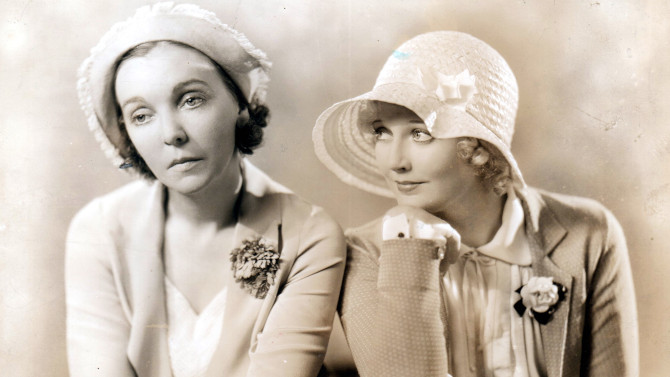 Let's Do ThingsCatch-As Catch-CanMarch 3, 2024
Let's Do ThingsCatch-As Catch-CanMarch 3, 2024With the massive success of Laurel and Hardy, who producer Hal Roach had paired together after signing them separately in 1926 (they would remain with his studio until 1940), the man had the bright idea of creating a female counterpart duo, bringing together Zasu Pitts and Thelma Todd. The team would make seventeen popular shorts from 1931-33, their first two, Let’s Do Things and Catch-As Catch-Can, looked at here today. Like all good comedy teams, you have two very different character types. Zasu comes across as the slightly depressed, nervous and fretful brunette, while Thelma is a much more vibrant and colourful blonde dame. . . the former’s desperation often dragging her more put together friend into rather unorthodox situations. In Let’s Do Things, they find themselves as employees selling music for a giant department store... while looking for a way out of their dead-end jobs.
-
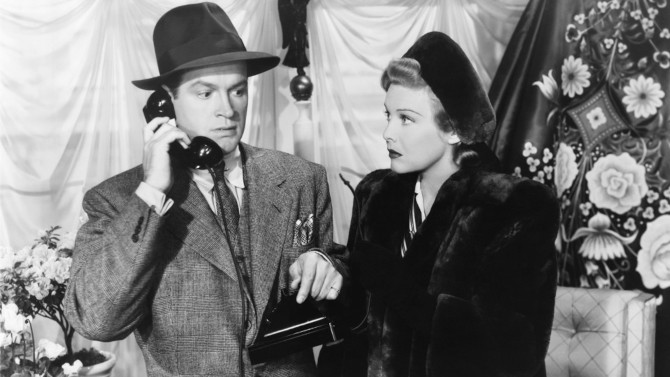
Wartime Blonde Bombshell
My Favorite BlondeFebruary 22, 2024Comedic war-tinged movies were all the rage in Hollywood during World War II... a way to ease the tension while keeping morale up. Think Charlie Chaplin’s The Great Dictator (1940), Abbott and Costello’s quasi trilogy of Buck Privates, In the Navy, and Keep `Em Flying (all of which were released in 1941), Ernst Lubitsch’s To Be or Not to Be (1942), as well as today’s feature, the Sidney Lanfield directed, Bob Hope starring My Favorite Blonde (also 1942). A wartime crime caper woven within a Bob Hope vehicle, Karen Bentley (Madeleine Carroll – The 39 Steps), is a British secret agent who is given the unenviable task of delivering a cipher after her partner is murdered by a ruthless group of German spies led by Madame Stephanie Runick (Gale Sondergaard – who was also in The Cat and the Canary, Never Say Die, and Road to Rio with Bob Hope).
-
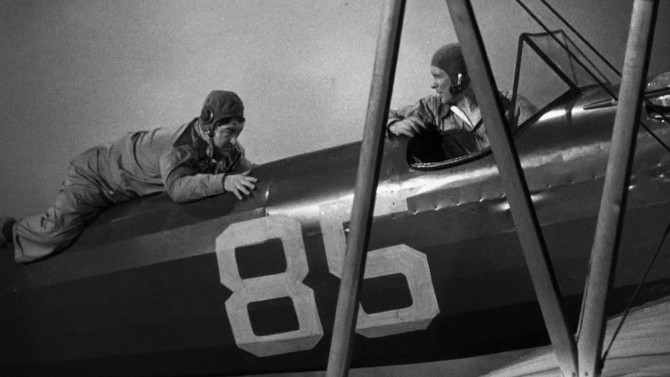
Flying High!
Keep 'Em FlyingJanuary 30, 2024If you’ve ever seen anything from the comedy team of Abbott and Costello, you’ll know that it is rather rare to find anyone who will take up the screen as much as good old funny man Lou... that is, unless he’s paired with comedienne Martha Raye – there’s a reason she’s known as “The Big Mouth”. In Keep `Em Flying (1941), they would share the silver screen for the first and only time... but Lou had his work cut out for him, as she plays twins. The team’s fourth starring movie released in just ten months (and the third military movie to keep spirits high during World War II), all four were manned by Arthur Lubin (their next film, Ride `Em Cowboy would be his last with the duo), a steady hand that helped keep the boys in line.
-
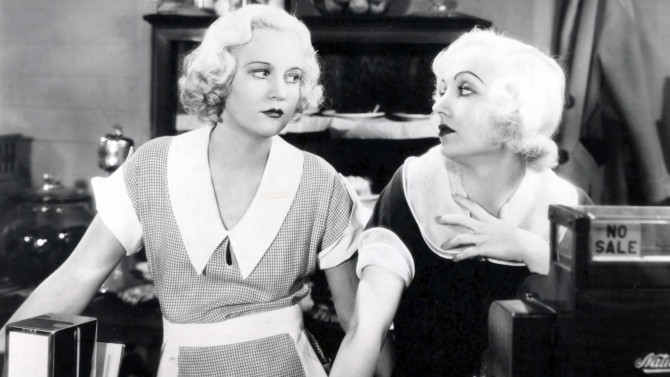
Virtue Signaling
VirtueDecember 18, 2023A Pre-Code romantic crime drama from Columbia Pictures, 1932's Virtue, directed by Edward Buzzell, got off to a bit of a bumpy start... for when star Carole Lombard (on loan from Paramount) met studio president Harry Cohn (known to be blunt, opinionated, and rather colourful with his language), he told her that her hair was too white – making her look like ‘a whore’. Lombard, no shrinking violet, promptly responded with: “if anyone would know a whore it would be you”. Though the two would soon earn each other’s respect (something that would last for the rest of their lives), this really is a perfect story that exemplifies the edgy themes and style found in these Pre-Code movies. Opening with a black screen that hides the visuals of a criminal sentence, a Judge rather kindly orders several prostitutes to vacate the city, but if they return, they shall be punished to the full extent of the law.

